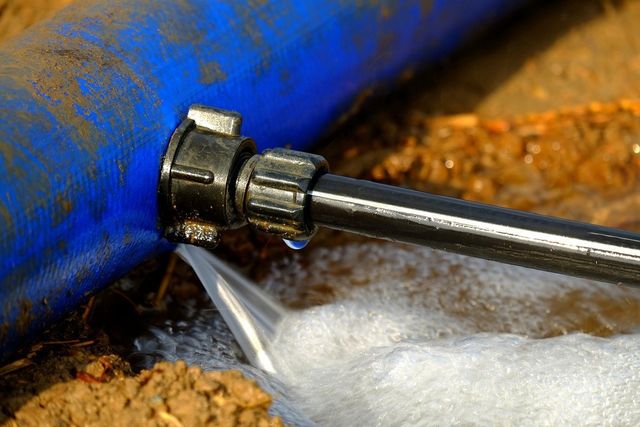The content below pertaining to Leaking water lines is truly interesting. Don't miss it.

Early discovery of leaking water lines can reduce a prospective catastrophe. Some small water leaks may not be visible.
1. Analyze the Water Meter
Every house has a water meter. Checking it is a proven way that helps you discover leakages. For beginners, shut off all the water sources. Make certain no person will purge, make use of the tap, shower, run the cleaning machine or dishwasher. From there, most likely to the meter and also watch if it will certainly transform. Since no one is using it, there must be no motions. That suggests a fast-moving leakage if it moves. If you detect no changes, wait an hour or 2 as well as examine back again. This indicates you may have a slow leakage that can even be underground.
2. Check Water Usage
Evaluate your water expenses as well as track your water usage. As the one paying it, you ought to discover if there are any type of discrepancies. If you spot sudden changes, despite your consumption coinciding, it means that you have leakages in your plumbing system. Bear in mind, your water expense ought to drop under the very same variety monthly. An abrupt spike in your expense indicates a fast-moving leakage.
On the other hand, a constant boost on a monthly basis, even with the same practices, reveals you have a slow leak that's likewise gradually escalating. Call a plumber to completely inspect your residential or commercial property, particularly if you feel a warm area on your floor with piping beneath.
3. Do a Food Coloring Test
When it pertains to water consumption, 30% comes from commodes. Examination to see if they are running correctly. Decrease flecks of food shade in the tank and also wait 10 minutes. There's a leakage in between the container as well as bowl if the color in some way infiltrates your bowl throughout that time without flushing.
4. Asses Outside Lines
Do not fail to remember to check your exterior water lines as well. Ought to water seep out of the link, you have a loose rubber gasket. One little leakage can throw away bunches of water as well as spike your water expense.
5. Examine the situation as well as inspect
House owners should make it a routine to check under the sink counters as well as even inside closets for any bad odor or mold development. These 2 warnings indicate a leakage so punctual attention is required. Doing routine examinations, even bi-annually, can save you from a major issue.
Much more importantly, if you know your home is already old, keep a watchful eye on your heating systems, pipes, pipelines and so on. Check for stainings as well as compromising as the majority of pipelines and also appliances have a life span. They will likewise normally wear away due to wear and tear. Don't wait for it to rise if you presume leaking water lines in your plumbing system. Call a specialist plumber right away so you do not wind up with an awful mess in your home.
Early discovery of leaking water lines can minimize a prospective calamity. Some little water leaks might not be visible. Examining it is a guaranteed means that aids you uncover leaks. One tiny leakage can throw away bunches of water and also increase your water expense.
If you presume leaking water lines in your plumbing system, do not wait for it to rise.
WARNING SIGNS OF WATER LEAKAGE BEHIND THE WALL
PERSISTENT MUSTY ODORS
As water slowly drips from a leaky pipe inside the wall, flooring and sheetrock stay damp and develop an odor similar to wet cardboard. It generates a musty smell that can help you find hidden leaks.
MOLD IN UNUSUAL AREAS
Mold usually grows in wet areas like kitchens, baths and laundry rooms. If you spot the stuff on walls or baseboards in other rooms of the house, it’s a good indicator of undetected water leaks.
STAINS THAT GROW
When mold thrives around a leaky pipe, it sometimes takes hold on the inside surface of the affected wall. A growing stain on otherwise clean sheetrock is often your sign of a hidden plumbing problem.
PEELING OR BUBBLING WALLPAPER / PAINT
This clue is easy to miss in rooms that don’t get much use. When you see wallpaper separating along seams or paint bubbling or flaking off the wall, blame sheetrock that stays wet because of an undetected leak.
BUCKLED CEILINGS AND STAINED FLOORS
If ceilings or floors in bathrooms, kitchens or laundry areas develop structural problems, don’t rule out constant damp inside the walls. Wet sheetrock can affect adjacent framing, flooring and ceilings.
https://www.servicemasterbyzaba.com/blog/how-to-detect-water-leakage-in-walls/

We had been guided to that write-up about Finding hidden leaks through an acquaintance on another domain. Liked our blog entry? Please share it. Help other people discover it. Bless you for your time. Visit again soon.